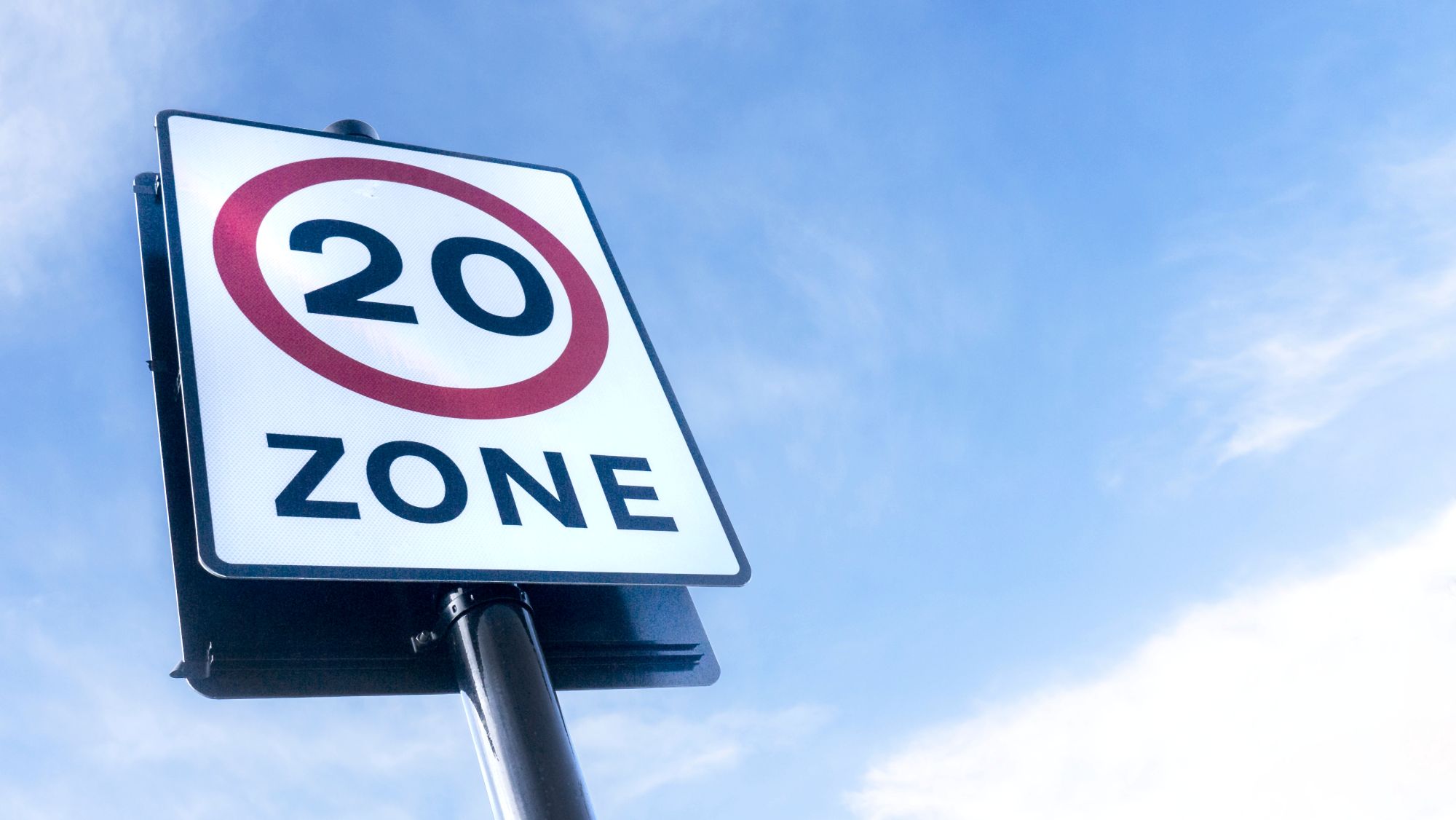
Susie Jones
Care sunt implicațiile limitelor de viteză de 20 mph pentru flote?
Creat: 16.04.2025
•
Actualizat: 16.04.2025
În 2023, 188 de vehicule grele de transport au fost implicate în coliziuni soldate cu decese, o scădere față de 2022, dar totuși o statistică îngrijorătoare. Aceste accidente ar fi putut rezulta din mai mulți factori, cum ar fi oboseala șoferului, proasta întreținere a vehiculului, condițiile meteorologice sau acțiunile altor utilizatori ai drumurilor. Cu toate acestea, datele organizației caritabile pentru siguranța rutieră Brake sugerează că 58% dintre decesele cauzate de accidente rutiere au avut viteza raportată ca factor de siguranță rutieră. În acest blog, vom analiza modul în care punerea în aplicare a limitelor de viteză de 20 mph ar putea avea un impact asupra operațiunilor flotelor și ar putea reduce numărul de decese.
Unde au loc accidentele de vehicule grele de marfă?
Conform [EROS] (https://www.insurancerevolution.co.uk/blog/hgv-driving-safety-statistics/), doar 10% din coliziunile cu vehicule grele de marfă au avut loc pe autostradă - celelalte 90% au avut loc mai degrabă pe un drum urban sau rural. Drumurile rurale le oferă șoferilor de camioane spații înguste, viraje bruște și interacțiuni cu utilizatorii vulnerabili ai drumurilor, cum ar fi bicicliștii și pietonii, ceea ce crește probabilitatea accidentelor. Zonele urbane prezintă un risc mai mare pentru șoferii de camioane din cauza densității mai mari a traficului, a opririlor frecvente, a activității pietonilor și a configurației complexe a drumurilor - combinate cu imprevizibilitatea drumurilor urbane, acestea reprezintă un pericol mai mare pentru șoferii de camioane.
Impactul zonelor de 20mph.
Cifrele publicate de [Guvernul galez] (https://motortransport.co.uk/industry-news/fleetcheck-urges-operators-to-back-calls-for-wider-use-of-20mph-speed-limits/25490.article) au indicat cu 100 mai puține victime pe drumurile urbane în 2024, comparativ cu aceeași perioadă din 2023, înainte ca limita de viteză de 20 mph să fie impusă în zonele urbane.
Programul este susținut de organizații precum Brake și Cycling UK, iar acum specialiștii în gestionarea flotelor [FleetCheck] (https://motortransport.co.uk/industry-news/fleetcheck-urges-operators-to-back-calls-for-wider-use-of-20mph-speed-limits/25490.article) încurajează companiile de transport să sprijine programul. Aceștia susțin că trecerea de la 30 km/h la 20 km/h va avea un impact minim asupra eficienței flotei și întăresc ideea că acest lucru ar salva vieți în fiecare an.

Ce părere au flotele și șoferii despre limita de viteză de 20 mph?
Conform FleetCheck, operatorii de transport au avut sentimente mixte față de inițiativă. Unii au văzut schimbările ca pe o piedică în calea eficienței - susținând că limitele de viteză mai mici ar putea forța unele flote să reducă numărul de livrări pe care le pot face într-o anumită perioadă.
Pe paginile de social media ale SNAP, șoferii au avut sentimente puternice față de această sugestie. Un șofer a comentat:
"Cine va susține mai multe zone de 20 km/h? Întregul standard de conducere este problema. De când am ieșit de la izolare, standardul de conducere a fost diabolic, inclusiv pentru mașini, camionete și camioane."
Sentimentul a rămas același pe rețelele de socializare, mulți nefiind de acord cu schimbarea.
Beneficiile mai multor zone cu viteze de 20 km/h.
Zonele cu viteză redusă oferă mai multe beneficii pentru șoferii de camioane.
Vitezele reduse îmbunătățesc timpii de reacție și reduc distanțele de oprire, facilitând evitarea coliziunilor - în special în zonele urbane.
În cazul limitelor de viteză reduse, este mai probabil ca uzura și ruperea vehiculelor să fie mai redusă pentru camioane.
Obstacolele cu care s-ar putea confrunta companiile de flote.
După cum s-a menționat, unele companii de flote sunt îngrijorate de faptul că scăderea limitelor de viteză ar putea reduce numărul de livrări pe care le-ar putea face într-o anumită perioadă. Flotele s-ar putea confrunta, de asemenea, cu următoarele provocări:
Timi de călătorie mai lungi: care afectează livrările sensibile la timp, afectând programarea și așteptările clienților.
Planificarea rutelor: companiile pot fi nevoite să ajusteze rutele pentru a ține cont de vitezele mai mici.
Conformitate: investiția în formarea suplimentară a conducătorilor auto pentru a asigura respectarea noilor limite de viteză va fi esențială.
Deși aceste probleme pot reprezenta provocări suplimentare pentru companiile de flote, multe pot fi gestionate proactiv. Mulți ar susține că beneficiile pe termen lung în materie de siguranță depășesc obstacolele.

Cifrele vorbesc de la sine.
Într-o campanie revizuită intitulată Autostrăzi periculoase, SNAP a identificat cele mai periculoase locații GB. Am aprofundat acest subiect pentru a descoperi care drumuri ar putea beneficia de o limită de viteză redusă.
SNAP a descoperit că sud-estul are cele mai periculoase drumuri. Kent are cele mai periculoase drumuri din Marea Britanie și [propune un obiectiv de zero decese rutiere] (https://www.kent.gov.uk/roads-and-travel/road-safety/vision-zero-road-safety-strategy?utm_source=chatgpt.com) pe rețeaua Kent Highway Network până în 2050. Care sunt drumurile cele mai îngrijorătoare?
A254: Un drum scurt de doar patru mile, dar care a fost numit ruta cu cel mai mare risc din Marea Britanie în 2018. Raportul a evidențiat o porțiune din A254 între intersecția cu A28 la Margate și intersecția cu A255 lângă Ramsgate. Limita de viteză pe această porțiune variază între 30mph și 40mph - zonele construite și un flux de trafic intens din portul Dover fac acest drum deosebit de periculos pentru bicicliști, pietoni și alți utilizatori ai drumului. Ar putea această porțiune de drum să beneficieze de limite de viteză mai mici?
A252: Cunoscută pentru rata ridicată a accidentelor, A252 se întinde pe 8,7 mile. În 2020, au început lucrările de reducere a numărului și a gravității accidentelor, printre schimbări numărându-se o scădere de la 60 la 50 km/h pe această porțiune, cu excepția cazurilor în care sunt în vigoare limite mai mici. Cu toate acestea, este suficient acest lucru pentru a scăpa de reputația drumului ca fiind unul dintre cele mai rele din Marea Britanie?
Surrey și Essex au fost, de asemenea, în fruntea listei și au avut un total combinat de 30.378 accidente în ultimii cinci ani. Rata ridicată a accidentelor în Surrey poate fi atribuită amestecului de orașe populate și drumuri rurale. Apropierea sa de Londra și de autostrăzile principale a dus la mai multe coliziuni.
M25: Cunoscută și sub numele de autostrada orbitală a Londrei, M25 este unul dintre cele mai aglomerate drumuri din Marea Britanie, fiind totodată al doilea cel mai lung drum de centură din Europa. Între 2007 și 2016, au fost raportate 7.673 de accidente și 80 de decese. Fiind o autostradă crucială, ar fi ridicol să se ajusteze viteza la 20 mph. Totuși, ar beneficia M25 de zone cu viteză limitată?
A3: Cu o lungime de 67 de mile, A3 poate fi un drum dificil de parcurs din cauza volumului mare de trafic, a limitelor de viteză și a secțiunilor cu condiții de drum precare.
Întrebări frecvente
Care este limita maximă de viteză pentru camioane?
Șoferii de camioane trebuie să respecte reglementări stricte privind viteza. Aceste restricții sunt instituite pentru a ține cont de dimensiunea, greutatea și capacitatea de frânare a unui camion.
Calee cu o singură bandă: Un camion de peste 7,5 tone este limitat la o viteză maximă de 80 km/h.
Calee cu două benzi: 60 mph este limita maximă de viteză pentru un camion de peste 7,5 tone.
Autostrăzi: Șoferii de camioane nu trebuie să depășească 100 km/h pe autostradă.
Reglementări privind limitatoarele de viteză în Regatul Unit În Regatul Unit, dispozitivele de limitare a vitezei trebuie instalate în orice autocamion pentru a limita viteza maximă pe care o poate atinge vehiculul.
Cerințe legale în Regatul Unit: Toate camioanele de peste 3,5 tone trebuie să aibă un limitator de viteză setat la 56 mph.
Cum funcționează: Limitatoarele de viteză limitează cantitatea de combustibil furnizată motorului odată ce vehiculul atinge o viteză prestabilită - asigurându-se că șoferii nu pot depăși limita.
Are nevoie un autocamion privat de un limitator de viteză?
Un camion privat nu are nevoie de un limitator de viteză, cu excepția cazului în care este utilizat în scopuri comerciale. Trebuie să declarați dacă vehiculul dvs. este scutit de necesitatea unui limitator de viteză atunci când îl prezentați pentru MOT, completând un [formular de declarație privind limitatorul de viteză] (https://www.gov.uk/government/publications/hgv-speed-limiter-exemption-declaration-form).



